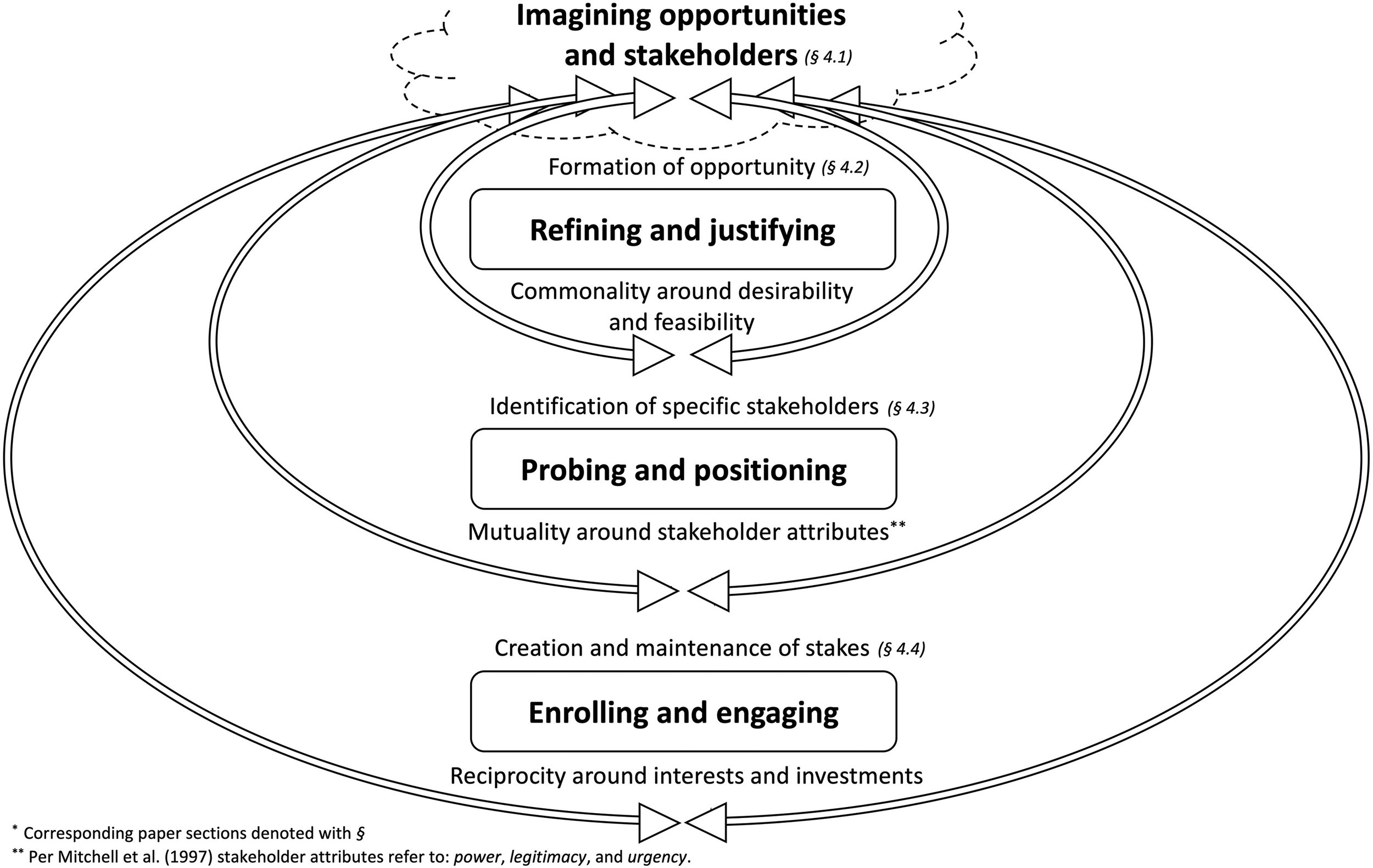Stakeholder Identification and Enrollment in Emerging Ventures
Research Paper Title:
“Stakeholder Identification as Entrepreneurial Action: The Social Process of Stakeholder Enrollment in New Venture Emergence”
Authors:
J. Robert Mitchell (Colorado State University and Western University)
Trevor L. Israelsen (University of Victoria)
Ronald K. Mitchell (Texas Tech University)
Dominic S.K. Lim (Western University)
Background:
Enrolling stakeholders is essential for new ventures to emerge. But why, how, and when does this happen? The authors suggest that three forms of social action help entrepreneurs to identify and enroll stakeholders. First, refining and justifying imagined opportunities can enable commonality between entrepreneurs and other actors about entrepreneurial opportunities. Second, probing and positioning between entrepreneurs and imagined stakeholders can enable entrepreneurs and others to develop mutuality about how their potential contributions might be complementary and can lead to stakeholder identification. Third, enrolling and engaging such identified stakeholders can enable reciprocity regarding the interests and investments needed for the creation and maintenance of stakes in a venture. Just like there are first-person opportunities for entrepreneurs, there are second-person opportunities that involve entrepreneurs understanding how their venture can be an opportunity for other actors. In this sense, the entrepreneurial action that is essential to new venture emergence must also include social action to enroll stakeholders.
Conclusion:
In this paper, the authors conceptualize a social process of stakeholder identification and enrollment as iterative, recursive, and constitutive, involving dialogue between entrepreneurs and others, focused on three forms of social action that lead to stakeholder enrollment. The authors theorize one form of social action where refining and justifying imagined opportunities can enable commonality between entrepreneurs and other actors, which leads to the formation of entrepreneurial opportunities. The authors theorize a second form of social action where probing and positioning can enable entrepreneurs and others to develop mutuality about how their potential contributions might be complementary; thereby leading these other actors to become identified as specific stakeholders of a new venture. The authors theorize a third form of social action where enrolling and engaging such mutually identified stakeholders can enable reciprocity regarding the interests and investments needed for the creation and maintenance of stakes in a new venture. Much of the entrepreneurship literature has concentrated on the formation and exploitation of entrepreneurial opportunities. While this literature has focused somewhat on stakeholders, this focus tends to be more generic (e.g., weakly linked to the stakeholder literature) or isolated (e.g., largely focused on a single stakeholder group such as customers, investors, employees, etc.). What the authors have sought to provide in this paper is a more thorough grounding of work on stakeholder enrollment through the incorporation of key ideas from the rich stakeholder literature, to better explain who is likely to be identified and enrolled as a stakeholder and who is not, while doing so in conjunction with prior research on the development of opportunities. While opportunities are clearly important, the researchers argue that what matters just as much for the successful formation of new ventures, is the identification and enrollment of definitive stakeholders. By introducing a process model rooted in social action that draws more deeply upon the extant stakeholder research, the researchers thus offer a more nuanced explanation of why, how, and when stakeholders are identified, and stakes in new ventures are created and maintained.



